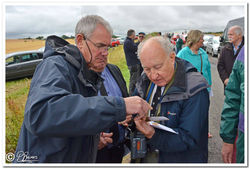Maltby Miners Memorial Community Group
Maltby Miners Memorial Community Group
Photos by Andrew Fletcher and Pete Bowers
 |  |
|---|---|
 |  |
 |  |
 |  |
 |  |
 |  |
 |  |
 |  |
 |  |
 |  |
 |  |
 |  |
 |  |
 |  |
 |  |
 |  |
 |  |
 |  |
 |  |
 |  |
 |  |
 |  |
 |  |
 |  |
 |  |
 |  |
 |  |
 |  |
 |  |
 |  |
 |  |
 |  |
 |  |
 |  |
 |  |
 |  |
 |  |
 |  |
 |  |
 |  |
 |  |
 |  |
 |  |
 |  |
 |  |
 |  |
 |  |
 |  |
 |  |
 |  |
 |  |
 |  |
 |  |
 |  |
 |  |
 |  |
 |  |
 |  |
 |  |
 |  |
 |  |
 |  |
 |  |
 |  |
 |  |
 |  |
 |  |
MALTBY's BLACK SATURDAY
JULY 28th 1923
Maltby Colliery began producing coal in 1911 and while the coal was of an extremely good quality the conditions in which the men were mining the coal were notoriously dangerous. The Barnsley seam, as it was known, was an extremely “gassy” seam in which there was an ever present danger of methane gas becoming ignited resulting in “gob” fires which, in the right conditions could have led to explosions.
Early in 1923 it was noticed that “gob” fires were indeed burning giving rise to noxious fumes that emanated along the coal face causing working conditions to become intolerable. As a result coal production ceased and volunteers were called upon to build stoppings at various positions on the face and in the gates. These measures would hopefully prevent the spread of fumes and allow the colliers to recommence coal production. The final stoppings were completed on the 26th July 1923 and work commenced on bringing pipework up to and through the stoppings through which it was planned to inject nitrogen. Nitrogen is an inert gas which does not support combustion and therefore the fires would extinguish.
At 6am on the 28th July 122 men (all volunteers) plus officials descended down the mine to complete the task of preparing to inject nitrogen. At approximately 8am there was a change in atmospheric pressure which resulted in a rise in the methane level down the mine from 3% to 6%. When the methane level is between 5% and 15% it causes the surrounding atmosphere to become extremely volatile and if there is a heat source present it is likely to result in an explosion.
At 8-55am there was a violent explosion resulting in massive roof falls along the coal face, and in some of the cross gates. Rescue teams were sent below but soon returned with the sad news that there was no hope of finding anyone alive in the vicinity of the roof falls. Twenty seven men lost their lives, and only one body was recovered, that of ORIGINAL (REG) RENSHAW), whose body was discovered in 95's cross gate where the explosion had run out of energy. The body was badly burned and bruised. It was subsequently brought to the surface and his funeral was held a few days later. His body now lies in the cemetery on Grange Lane and is marked with a headstone that bears his name.
All hopes of finding further bodies were given up and rescue operations were stopped. In the light of the situation that gas was still present in the vicinity, the decision was made to totally seal the area off and ensure the rest of the mine could be safely worked. It was made safe by the end of August 1923 and officially re-opened on the 8th September 1923. The mine was soon back in full production.
In November 1947 new faces had been opened which were close to the site of the disaster. On November 14th 1947 a face was being worked and a body was discovered between the new face and the adjacent disaster site. This body was totally unrecognisable and was subsequently removed from the mine and ultimately buried in the cemetery on Grange Lane. The grave is marked with a headstone bearing the inscription “THE UNKOWN MINER.”
This means that there are still twenty five bodies still entombed approximately 800 yards below the earth's surface. On 28th July 2015 Maltby Miners Memorial Community Group had a memorial on Limekiln Lane erected which is directly above the spot where the explosion happened and held a commemoration day, a service was held for the families of the men who lost their lives in the disaster along with dignitaries ex-miners and school children. (pictured above)
The group hold a short service at the memorial stone on July 28th every year at which floral tributes are laid as a mark of respect to the brave men who lost their lives trying to save the jobs of their colleagues. Also floral tributes are laid on the two graves in Grange Lane cemetery on the same day.
A march by school children and adults carrying miners lamps (which the kids make) takes place every year on a date close to the 28th July. This march starts at the Maltby Miners Institute and finishes at the cemetery where a short service takes place and illuminated lanterns are placed around the graves.
It is hoped that, as time passes, generations to come will carry on honouring those that lost their lives, in the same way that we do now,












